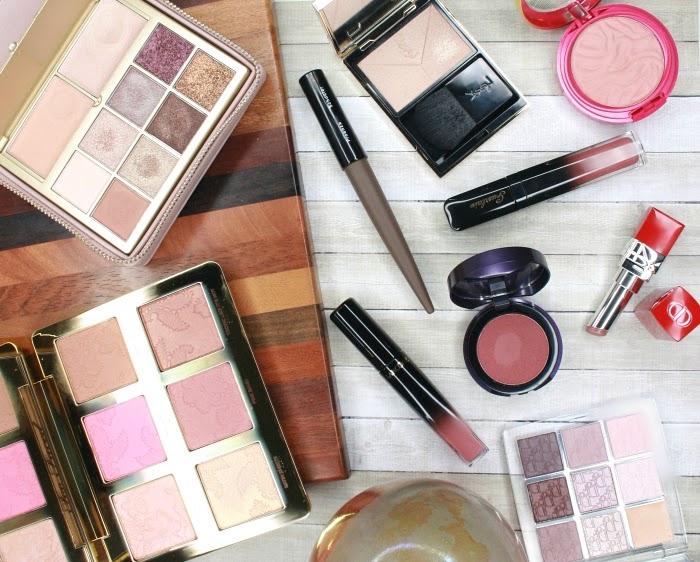PR Sample
TelomErase Serum, subtitled Triple Telomere Targeting 6-in-1 Multi-Corrective, promises to: erase (signs of aging I suppose), tighten, brighten, blur, moisturize, and regenerate. So far, it sounds like what any old anti-aging treatment would claim, except for the reference to telomeres (we'll get to that).
Where things get a little... unusual is when you read the informational leaflet that comes with the product. It's also available on the brand's website and you can read the whole thing here, but I'll copy a short excerpt here, so you can see what I'm talking about:
Tested on human skin fibroblasts that had arrived at a pre-senescent state, the average length of telomeres shortens by 630 bases in the control group, and by only 200 bases in the group treated with Renovage.
That... reads more like an abstract from a paper in a dermatology journal than information adapted to share with customers of various backgrounds if you ask me, and the entire leaflet is written the same way. I doubt that most people would read past the first two lines, unless they have a degree in biology. I just think that including data that's clearly beyond most of your users' comprehension is manipulative in a way: it makes the product sound impressive because it's so full of science stuff, but most customers don't have a clue what it all means and lack the knowledge necessary to read it with a critical mind. It's easy to convince people who don't speak your language, or in this case your scientific jargon...
Beyond the overly technical way they are presented, the claims in themselves are pretty much mind-blowing when you take the time to actually examine them. So let's talk about telomeres - after all they gave this product its name, and that's what it's supposed to target. Please buckle your seat belt while we start a quick journey into the fascinating world of your cells. If you're not interested in science stuff, you can skip the next few paragraphs and jump to the unicorn picture. When in doubt, I always use a unicorn...
Skin, like any human tissue (or animal and plant for that matter), is made of a lot of cells. Inside each cell is a kind of core, called a nucleus, that contains all your genetic material, in the form of 23 pairs of chromosomes. A chromosome is made of DNA and contains sequences of genes. At each end of the chromosome is an area called a telomere, a word derived from ancient Greek that just means "end part". This end part protects the rest of the DNA from getting damaged, like a cap.
The telomeres themselves consist of a small sequence of nucleotides (the building blocks of DNA) repeated many, many times. Like thousands and thousands of times. Imagine a chromosome as a coded message, the telomere would look like that: End Of Message/End Of Message/End Of Message/... repeated several thousand times.
This may sound weird, like, why do you need to say the same thing so many times/have a cap that's so long?? But it's actually very useful, for one simple reason: a small piece gets cut off every time the cell reproduces! You know that in order to make a brand new cell, all you have to do is take an existing cell and wait for it to divide into 2. When it divides, it has to make a copy of all your chromosomes so the new cell contains your genetic information too. In the process, a small portion at the ends of each chromosome doesn't make it into the new cell, so a few repetitions of the End Of Message sequence are taken out. Between 25 and 200 repetitions are lost each time a cell divides. Imagine if we didn't have telomeres to serve as a disposable buffer: important parts of the chromosome would get cut off and eventually it would lack entire genes!
So, as you can imagine, the telomere, our "end part", gets shorter and shorter with every division. When the telomeres become too short, the cell can't get copied anymore, and it kills itself. The shortening of telomeres is associated with aging, so knowing that, trying to keep them longer in your skin cells sounds like a good idea for an anti-aging cream. That is, if you don't think that a cosmetic product aiming to literally alter your DNA sounds creepy.
But is there a way to limit the shortening of telomeres that happens with every cell division? Yes, that's exactly what an enzyme called telomerase does. It basically writes new "End Of Message" sequences to replace the ones that were cut off. You've probably heard of stem cells before: these cells have high concentrations of active telomerase, and they basically don't age. That sounds very good. But you know what other cells contain a lot of active telomerase? Cancer cells. Because telomerase stops the telomere shortening, the cancerous cells become almost immortal, and they keep proliferating without control. So telomerase may sound like the perfect solution to delay aging at first, but it's not that simple: you wouldn't want to activate it in a bad cell.
 |
| Unicorn by wolf4max is licensed under CC BY 2.0 |
Back to Reviv TelomErase serum, the product contains 3 ingredients that the brand claims can help activate telomerase: Cycloastragenol, Telosomyl and Renovage. The last two are actually trademarks, and both belong to French companies (Silab and Sederma). I'm not qualified to say if such ingredients can do what a brand promises, so I turned to Beaumiroir's in-house scientist, Dr C, PhD, aka Mr Lulle, to evaluate those claims.
His verdict: unsubstantiated. For the two trademarked substances, there are no peer-reviewed studies showing any effect on telomerase activation, and the data provided by Reviv comes directly from the manufacturers. For cycloastragenol, only a handful of studies published in scientific journals have mentioned a link with telomerase activation, and the subject is disputed. One additional remark he had was that if the claims were valid and scientifically demonstrated, this product would almost assuredly fall under FDA regulation as a drug, not a cosmetic product. In other words, the claims are not necessarily false, but there is no convincing evidence at the time to confidently say that this serum can effectively fight skin aging by limiting the shortening of telomeres.
Now that doesn't necessarily mean that TelomErase Serum does no good to skin: after all, it contains a lot of things that are not so controversial, and known to be beneficial to skin, like algae extracts, collagen, hyaluronic acid, astaxanthin, coenzyme Q10, peptides... But if you're hoping to look like you're in your 20s again because all your telomeres are long and happy, you might be expecting too much.
My personal experience with the serum was pretty good: it absorbs well into the skin, and the only thing that I disliked was its odor. It's fragrance-free (always better because fragrance can cause sensitivity, no matter if it's synthetic or natural) and its smell reminds me of yeast. It's neither overwhelming nor particularly unpleasant, I just didn't like it too much. I did feel a little bit of a tingling/warming sensation, and my skin was ever so slightly red just after application at night - that's something Reviv warns about - but I did notice a smoother, plumper appearance when I woke up in the morning, and it didn't cause breakouts. I received 2 small travel-size vials to test, and after finishing them I can't say that I see more long-term effects. The brand advises to use the TelomErase Serum once to twice a day for two to three months, and then reduce usage to 3 times a week to maintain the results, but I didn't have enough product to last a full month.
Overall: if you're really into anti-aging skincare and like trying new products, this serum could be worth looking into, as long as you're comfortable with the $149 price tag. However you should be aware that there is no strong scientific evidence backing the main claims made by the brand. Unfortunately that is true with most anti-aging cosmetics, but the promises here were so precise and apparently science-based that it is worth noting.
Where to buy: Reviv's website: use code TIGHT10 for 10% off until 12/31/15.
The product featured in this review was sent by the brand's PR through Brandbacker for consideration. I received no compensation other than a free sample to write this post, which only reflects my personal opinion. This post does not contain affiliate links.











No comments
Unfortunately the comment system does not work on mobile phones at this time :( If you see this message and leave a comment, I will be unable to approve it, I'm really sorry about this issue!